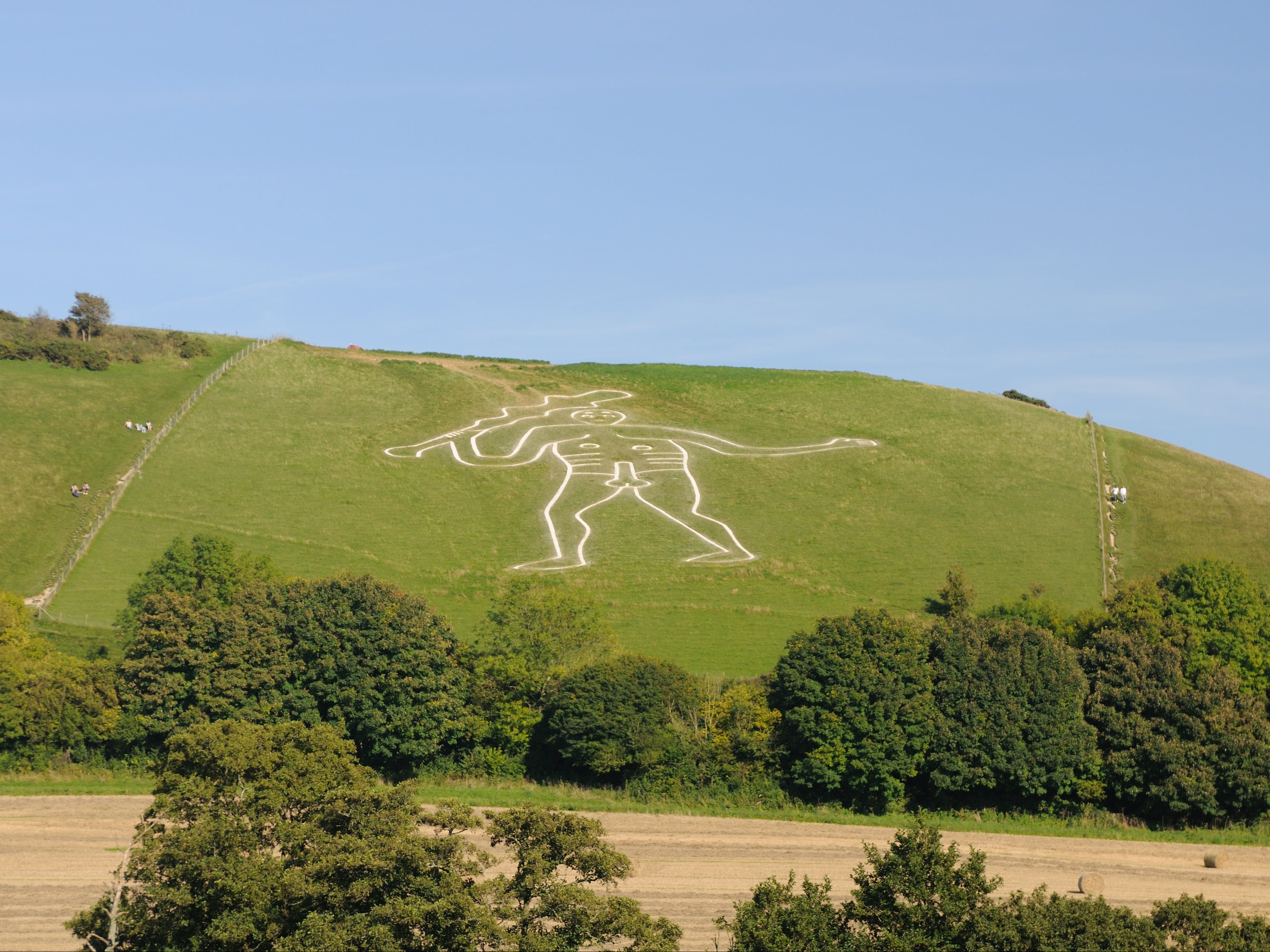Tourists have been left disappointed after an “exceptionally wet summer” covered the Cerne Abbas Giant’s famous appendage with an overgrowth of grass.
The ancient naked giant figure sculpted into the chalk hillside above Cerne Abbas in Dorset has unknown historical origins, but the figure is best known for the rather large appendage it presents, which attracts many visitors a year.
However, tourists have been left frustrated after the 180-foot giant’s private parts have been overgrown by grass, with visitors calling on the National Trust to cut the greenery back so he can be on full display once more.
Some even shared their surprise on social media, with one user sharing a side-by-side of “what we were expecting to see” of the giant as it is known with its thick outline, versus “what we actually saw!” which showed a barely visible silhouette of the landmark.
Yet, a National Trust spokesperson explained that visitors should not worry about the grass growth as it is still being maintained; they just try and leave the giant alone as much as possible as part of their conservation efforts.
“Caring for the Giant, its archaeology and the Site of Special Scientific Interest that surrounds him, is a complex task,” the spokesperson said, adding that sheep have been returned to the giant to help reduce the grass growth.
“The enclosure around the Giant is grazed at least twice a year, which helps to maintain the visibility of the Giant and also creates perfect conditions for the plants and butterflies to flourish on the chalk grassland,” they added.

The spokesperson went on to explain that “this year, the exceptionally wet summer has boosted the grass growth and temporarily reduced visibility of the Giant”.
“Following grazing, our small ranger team will undertake annual maintenance – cleaning, weeding and edging the Giant after grazing and ensuring this iconic landscape feature remains in peak condition,” they said.
The National Trust says on its website that part of conserving the giant “means leaving it alone as much as possible”.
“The chalk is replaced every decade or so, a process that takes days of work by National Trust rangers and volunteers,” the organisation wrote….
Click Here to Read the Full Original Article at The Independent Travel…
